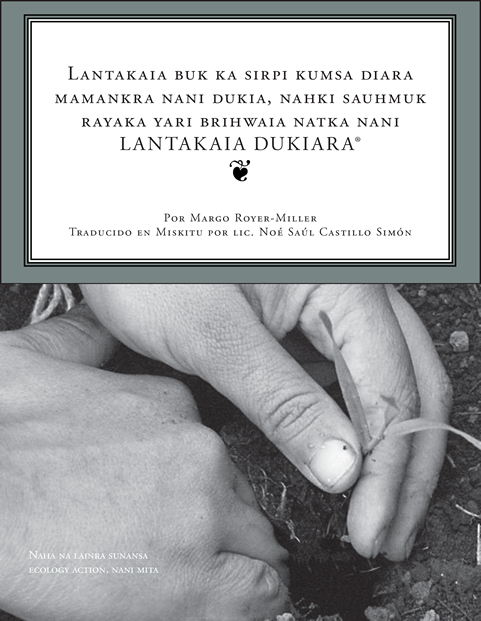GB Farmer's Handbook in Miskitu Ecology Action is happy to announce that our popular GB Farmer’s Handbook by Margo Royer-Miller has been translated into Miskitu by Lic. Noé Saúl Castillo Simón! It is now available for download (along with translations French, German, Hindi, Portuguese, Russian, Spanish, Turkish, and Korean) for free here. The Miskitu are indigenous people from the historic Moskitia/Mosquito (Miskitu) territory of Central America, which ranges from present- day Cape Camarón, Honduras, to Rio Grande, Nicaragua. The Miskitu nation formed part of the Eastern Atlantic Caribbean Zone, and was long dominated by British interests. The Miskito Kingdom was already an independent state when England officially recognized it in 1689, and in 1710, an official treaty established a British a protectorate over the kingdom. While many groups in the area now speak English, Spanish, and other languages, the Miskito/ Miskitu creole originated in the native Northern Nahuatl language and came about through frequent contact with the British. Slave ships wrecked along the coast in the seventeenth century led to intermarriage with the indigenous people, and many Miskito are of mixed Native American, African, and British ancestry. According to samepassage.org/miskito “The Miskito kingdom aided Britain during the American Revolutionary War by attacking Spanish colonies and gained several victories alongside the British. However, at the conclusion of the peace in 1783, Britain had to relinquish control over the coast. The British withdrawal was completed at the end of June 1787. Despite the withdrawal, Britain maintained an unofficial protectorate over the kingdom, often intervening to protect Miskito interests against Spanish encroachments. …Spanish settlers first began to arrive in Miskito land in 1787, but the Miskitos continued to dominate the area because of their numbers and the experienced military. Also, the Miskito territory is very inaccessible, and was therefore little affected by the Spanish conquest of the area. Their political structure allowed the Miskito people to retain their independence all through Spanish rule and through the Federation of Central American States. …However, they were finally absorbed into Nicaragua.” With an estimated 180,000 speakers, Miskito is the most widely spoken of a family of languages of Nicaragua and Honduras that has come to be known as Misumalpan (from the subgroups Miskito, Sumo, and Matagalpan). According to everipedia.org/ Miskito_language “In the 20th century the Miskito language started to dwindle. Honduras, being a former Spanish colony, officially used the Spanish language… In schools, children were forbidden from speaking Miskito for most of the 20th century and could only speak Spanish; young generations had less of an opportunity to practice the language. In the 1990s, many groups lobbied against the rule and promoted bilingual schools to preserve the Miskito language. Twenty such bilingual schools exist.” Traditionally small-scale farmers who cultivate a few hectares of land and use the jungle and rivers for hunting and fishing, the Miskitu are particularly vulnerable to the impacts of climate change – including severe drought and extreme hurricanes – which have altered the way they have farmed for centuries. Environmental scientists believe their survival could depend on their ability to adapt to climate change, and it is is our hope that the translation of the GB Farmer’s Handbook will help the Miskitu people in their quest for food sovereignty and climate resilience. Additional information about the Miskitu people and their language can be found online at:
♥ top | Newsletter Home |Table of Contents| Archive
|



